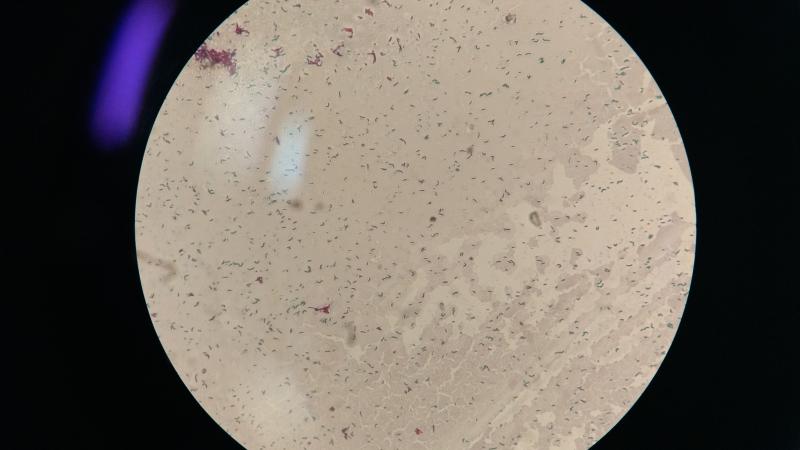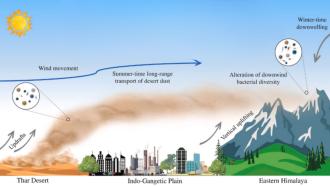
Although smaller than a cell in our body, a bacterium is strong enough to make us crippled and vulnerable with an infection. Among the many weapons these tiny microorganisms possess, bacterial toxins are one of them. These toxins, secreted by the bacteria targeting other bacteria or host cells, come in various forms but with a common goal—damage or destroy the target cells. In a new multi-disciplinary study, researchers at the Indian Institute of Science, Bengaluru, have unravelled how a class of toxins, called the pore-forming toxins, work to destroy our cells.
Pore-forming toxins, as the name suggests, puncture holes in animal cells, including human cells, and destroy them. These are proteins, and different types of bacteria could produce various kind of such toxins. Cytolysin A (ClyA) is a type of pore-forming toxin produced by some types bacteria like the Escherichia coli, Shigella and Salmonella. This toxin destroys the cells of various mammalian and bird species.
In this study published in the journal Proceedings of the National Academy of Sciences (PNAS), the researchers have tried to answer how the toxin forms pores in the cell membrane and how they selectively target the host cells without damaging the bacterial cell membrane. The research was supported by the Department of Science and Technology (DST) and the Department of Biotechnology (DBT). The team included scientists from the Centre of Biosystems Science and Engineering, Department of Chemical Engineering, and the Department of Molecular Reproduction Development and Genetics from IISc.
“This study clearly required the expertise of biologists, chemical engineers, biophysicists and bioengineers. This coming together of researchers allowed an understanding of the details of the working of the toxin, that would have been difficult to decipher by the individual disciplines and highlights how such interdisciplinary approaches can make important discoveries”, remarks Prof. Sandhya S. Visweswariah from IISc and a co-author of this study, highlighting the need for a collaborative approach.
The researchers showed that cholesterol, a constituent of our cell membrane, helps pore-forming toxins to cause rapid cell damage. A single ClyA molecule cannot form the pores in a membrane on its own. Hence, 12 molecules of ClyA arranged in a ring-like structure come together to puncture a hole.
The researchers used a technique called ‘single molecule imaging’ to visualise the process of pore formation. This process employs high-end cameras and microscopes to record the movement of a single protein molecule on a membrane. They used a fluorescent dye on the ClyA molecules to make them bright enough to be seen and to record its movement and interactions with other ClyA molecules. The researchers could thus monitor the pore formation as it happened. They also used supercomputer simulations to simulate the movement of the ClyA molecules and locate specific points on the ClyA molecule that interacted with the cholesterol present in the membrane.
The study found that cholesterol was indeed interacting with specific parts of this protein. The toxin molecule ClyA is a water-soluble protein. However, in the presence of lipid membranes, like our cell membrane, the molecule binds to the membrane by inserting a part of itself into the membrane. After binding, it starts roaming around the membrane looking for its partners to form the pore in the membrane. Cholesterol acts as a glue to stick other ClyA molecules together.
“Other pore-forming toxins use cholesterol for recognising and binding to the target cells. However, in the case of ClyA, we found that cholesterol does not help in binding to the membrane at all. Instead, it helped the protein in rupturing the cell in two other ways”, says Dr. Rahul Roy from IISc, in an interview with Research Matters.
During the study, the researchers observed that the cholesterol molecule allowed the toxin protein to achieve full insertion into the cell membrane. Besides, it also helped in 'stitching' the ClyA molecules together to quickly form the pore complex across the membrane. As bacterial membranes do not contain cholesterol, they remain safe from the damage caused by ClyA.
However, the researchers observed a few sites in the ClyA molecules which interacts explicitly with cholesterol. “This is an interesting observation since the bacterial cells do not have cholesterol. These cholesterol binding sites could have evolved to prepare the bacteria for attacking the target cells. Evolution must have allowed this to happen even though this does not aid in the growth of the bacteria in isolation”, comments Dr. Roy.
Pradeep Sathyanarayana, a researcher from the Center of Biosystems Science and Engineering, IISc, and the first author of this study, informs that this toxin has similarity with the proteins that cause neurodegenerative disorders like Alzheimer's and Parkinson's disease. Thus, findings from this study might be helpful to understand the mechanisms associated with these diseases.
Besides, the researchers hope that the study might open new avenues for treating a range of diseases. “The deep molecular insights gained from our study could assist in developing potential antibacterial therapies, cancer therapy and other biotechnological applications like DNA sequencing”, says Prof. K Ganapathy Ayappa, a senior co-author on the paper.






